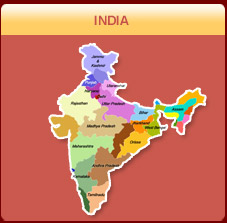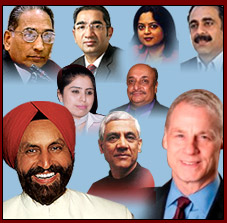


Recent articles and readings Get the low-down on key readings – following are some insightful articles on U.S. – India relations published in last few weeks...more



How can India help President Obama to lower the cost of healthcare reform in the U.S.?
The results of elections held on Nov 2 to the U.S. House of Representatives, Senate, and Governor races show that the President’s party, the Democrats, will face difficulties in moving the President’s agenda in U.S. Congress for the rest of his term.
There seem to have been three big dis-satisfactions in the U.S. electorate which have contributed to the loss of Democrats, and on which the Democrats and the President were unable to convince the majority:
- Job losses, unemployment, and dipping economy
- Republican charges of big government, and government spending
- Cost of healthcare reform proposed by President Obama
1. In his upcoming trip to India, President Obama is pushing for exports and inward investments into the U.S. – largely in response to the need to create jobs in the U.S. economy. This part of his agenda will be discussed at various meetings that will be held during the trip. India can help somewhat here – this will depend on the various business and trade deals that may be struck now or over next two years.
2. On big government in the U.S., and its government spending, India cannot conceive any role.
3. However, India can significantly help President Obama to lower the cost of healthcare reform in the U.S. The challenge for President Obama now is to pass muster with the budgets for his healthcare bill. With a Republican majority in the House of Representatives, the cost of the healthcare initiative may not be approved by the Congress.
If there is a stalemate, then President Obama will go into the 2012 presidential elections hobbled and with an unfinished agenda on healthcare. And he essentially has only one year from now to come up with a convincing answer on this issue – since the presidential campaign rhetoric will take over by end-2011, and thereafter it will become more and more difficult for him to show progress to the electorate in the fast furious months of the election campaign.
U.S. and India must immediately discuss large scale projects and partnership in pharmaceuticals and other healthcare items to lower the costs of U.S.’s healthcare spending. A deep partnership with India to lower the cost of medicines substantially and therefore the total costs of the package.
Issues like quality, patent-protection, and such can easily be planned – including having offices and officials of FDA and such agencies posted in India at the plant sites, and special “zone” designations to such plants and locations in India.
The savings in costs of medicines, drug discovery, and even medical care, including para-medical and nursing will help the U.S. citizens and economy. With an aging demographic, the healthcare system in the U.S. is in deep trouble and unless some radical plans are soon implemented, the health insurance, Medicare and Medicaid systems will collapse.
Mass manufacturing of medicines in India may lead to some job losses in America, but a well-calibrated cost-benefit system can calculate and compensate the job losses and re-adjustments, and still yield major net benefit to U.S. healthcare problems.
If an empowered task-force is set up immediately to explore this issue, then in 6-9 months it might be able to come up with a viable plan, and then President Obama can use that plan as a basis to defend and progress his agenda on healthcare.








